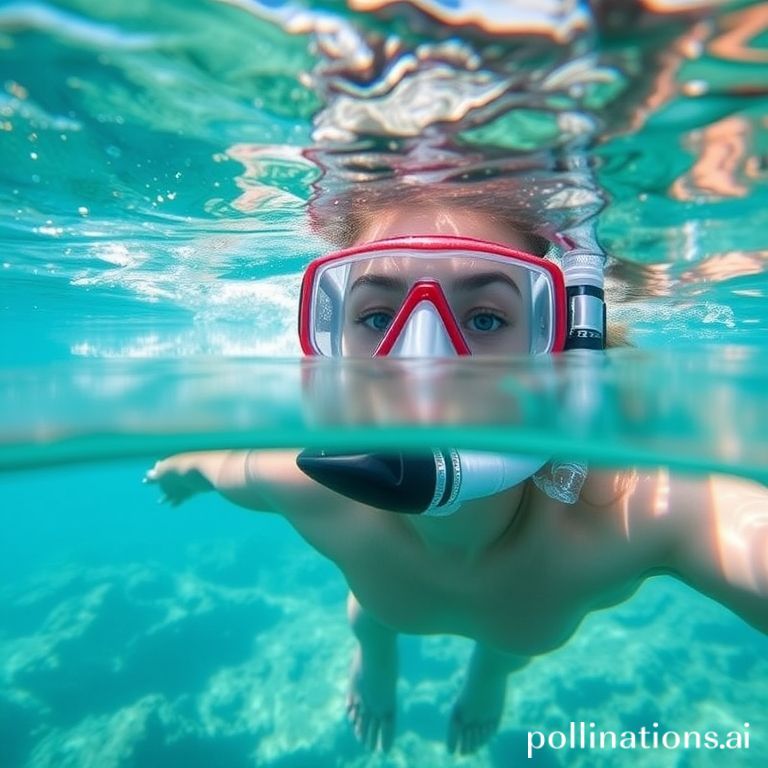Snorkeling offers a breathtaking window into the underwater world, allowing us to witness the vibrant beauty of marine life firsthand. However, this privilege comes with a responsibility to protect the delicate ecosystems we explore. By adopting mindful practices, we can minimize our impact and ensure that future generations can also enjoy the wonders of the ocean.
Many people don’t realize the impact that they have when snorkeling, and how important it is to be aware of the affect you have on the sea life and coral. Even the slightest touch can harm an anemone, break a brittle coral branch, or scare a fish away from its home. Let’s discuss how to keep our impact to a minimum while snorkeling and protect the plants and animals that live in our oceans.
Choosing Reef-Safe Products
Many conventional sunscreens and personal care products contain chemicals that are harmful to coral reefs and other marine organisms. Oxybenzone and octinoxate, common UV-filtering ingredients, have been shown to disrupt coral reproduction, cause coral bleaching, and damage coral DNA. To protect marine life, choose reef-safe alternatives that are free of these harmful chemicals. Look for mineral-based sunscreens containing zinc oxide or titanium dioxide, and opt for biodegradable soaps and shampoos.
Read the Labels Carefully
- Always check the ingredient list of your sunscreen and personal care products.
- Avoid products containing oxybenzone, octinoxate, octocrylene, and other harmful chemicals.
- Choose products labeled “reef-safe,” “reef-friendly,” or “biodegradable.”
Avoiding Contact with Coral and Marine Life
Coral reefs are fragile ecosystems that are easily damaged by physical contact. Even a gentle touch can break coral branches, remove their protective mucus layer, or introduce harmful bacteria. Similarly, touching or harassing marine animals can disrupt their natural behavior, cause stress, and even lead to injury. When snorkeling, maintain a safe distance from coral and marine life, and avoid touching or feeding them.
Tips for Responsible Snorkeling
- Maintain buoyancy control to avoid accidentally bumping into or stepping on coral.
- Swim slowly and deliberately, and be aware of your surroundings.
- Never touch, feed, or chase marine animals.
- Keep a safe distance from nesting birds and marine mammals.
Proper Waste Disposal
Plastic pollution is a major threat to marine life. Discarded plastic bags, bottles, and other debris can entangle marine animals, pollute their habitats, and even be ingested, leading to starvation and death. When snorkeling, be mindful of your waste and dispose of it properly. Avoid bringing single-use plastics with you, and pack out all trash that you generate.
Reduce Your Plastic Footprint
- Bring a reusable water bottle and refill it instead of buying disposable plastic bottles.
- Pack snacks in reusable containers instead of using plastic bags.
- Bring a reusable mesh bag to collect any trash that you find while snorkeling.
Supporting Sustainable Tourism
Sustainable tourism practices can help protect marine environments and support local communities. Choose tour operators and dive centers that are committed to responsible tourism, and that follow environmentally friendly practices. Look for businesses that support conservation efforts, educate their customers about marine life, and minimize their impact on the environment. Snorkeling in a cenote is a beautiful experience, just make sure that you are using reef-safe sunscreen to protect the fragile ecosystem!
Questions to Ask Your Tour Operator
- Do you use reef-safe sunscreens and personal care products on board?
- Do you educate your customers about marine life and conservation?
- Do you support local conservation efforts?
- Do you minimize your impact on the environment?
Conclusion
Protecting marine life while snorkeling is essential for preserving the health and beauty of our oceans. By choosing reef-safe products, avoiding contact with coral and marine life, properly disposing of waste, and supporting sustainable tourism, we can all make a difference. Let’s work together to ensure that future generations can enjoy the wonders of the underwater world.
If you enjoyed this article, don’t forget to explore more inspiring stories on Life in Mexico!
IMAGE: A breathtaking underwater scene featuring a snorkeler gracefully swimming above a vibrant coral reef teeming with colorful fish. The scene is bathed in dappled sunlight filtering through the clear turquoise water, creating a sense of peace and wonder. The coral is a mix of branching and plate formations, showcasing a variety of colors including pinks, purples, and yellows. Schools of small, brightly colored fish dart in and out of the coral, while larger, more solitary fish swim gracefully in the background. The snorkeler is wearing a mask and snorkel, and their body is positioned horizontally in the water, suggesting a relaxed and observant posture. The overall mood is serene and awe-inspiring, emphasizing the beauty and fragility of marine ecosystems. Style: Naturalistic underwater photography.


